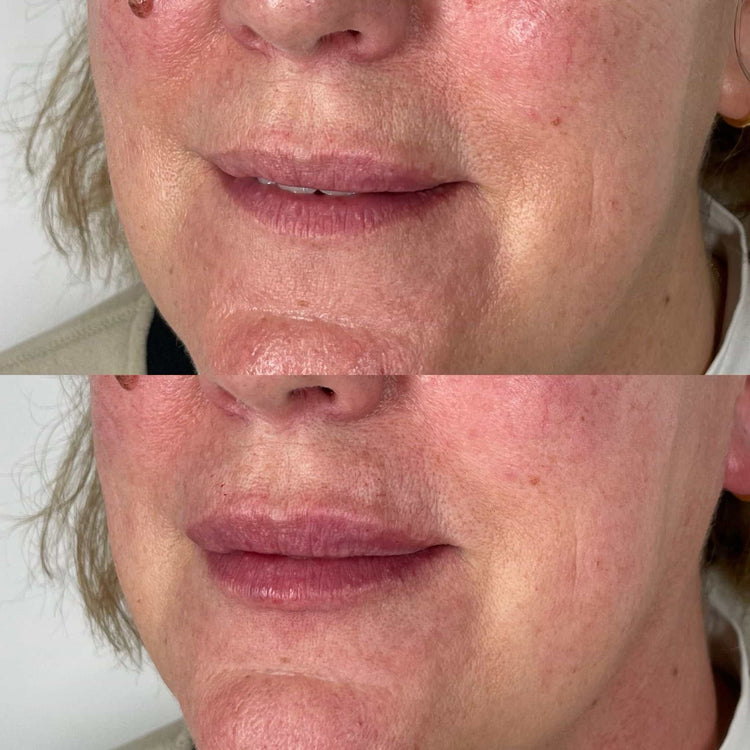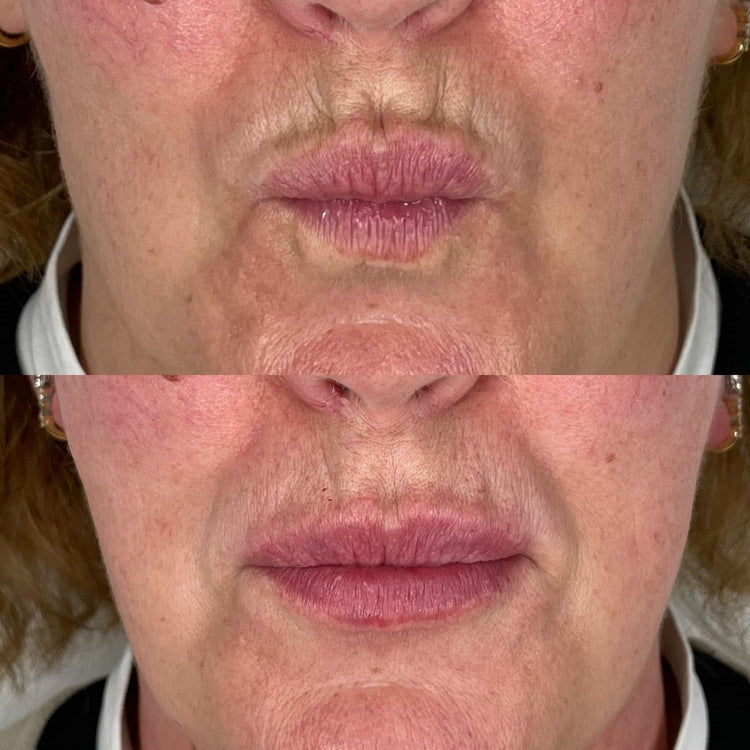Factors Affecting Filler Frequency
Determining the ideal frequency for dermal filler treatments is a highly individualized process, influenced by several key factors.
Age
Age is one significant factor that influences filler frequency. As we age, collagen and elastin production naturally declines, leading to volume loss in the face. Younger individuals may see results from fillers last longer due to their skin’s inherent elasticity. Conversely, as we get older, the rate of breakdown might be faster, requiring more frequent touch-up appointments.
Skin Condition
Determining the ideal frequency for dermal filler treatments is a highly individualized process, influenced by several key factors.
Age is one significant factor that influences filler frequency. As we age, collagen and elastin production naturally declines, leading to volume loss in the face. Younger individuals may see results from fillers last longer due to their skin’s inherent elasticity. Conversely, as we get older, the rate of breakdown might be faster, requiring more frequent touch-up appointments.
Other factors affecting filler frequency include:
- The type of filler used: Different fillers have varying longevity. Some hyaluronic acid fillers, for example, can last 6-18 months, while others may only last a few months.
- Injection location: Fillers placed in areas with high movement, such as the lips or around the nose, tend to break down faster than those injected in more stable areas like the cheeks.
- Lifestyle factors: Smoking, sun exposure, and certain medications can accelerate filler breakdown. Maintaining a healthy lifestyle can help prolong the effects of treatment.
- Individual skin characteristics: Skin thickness, elasticity, and metabolism can all influence how long fillers last.
Treatment Area
Determining the ideal frequency for dermal filler treatments is a highly individualized process, influenced by several key factors.
Other factors affecting filler frequency include:
- The type of filler used: Different fillers have varying longevity. Some hyaluronic acid fillers, for example, can last 6-18 months, while others may only last a few months.
- Injection location: Fillers placed in areas with high movement, such as the lips or around the nose, tend to break down faster than those injected in more stable areas like the cheeks.
- Lifestyle factors: Smoking, sun exposure, and certain medications can accelerate filler breakdown. Maintaining a healthy lifestyle can help prolong the effects of treatment.
- Individual skin characteristics: Skin thickness, elasticity, and metabolism can all influence how long fillers last.
Desired Outcome
Determining the ideal frequency for dermal filler treatments is a highly individualized process, influenced by several key factors.
Age is one significant factor that influences filler frequency. As we age, collagen and elastin production naturally declines, leading to volume loss in the face. Younger individuals may see results from fillers last longer due to their skin’s inherent elasticity. Conversely, as we get older, the rate of breakdown might be faster, requiring more frequent touch-up appointments.
Other factors affecting filler frequency include:
- The type of filler used: Different fillers have varying longevity. Some hyaluronic acid fillers, for example, can last 6-18 months, while others may only last a few months.
- Injection location: Fillers placed in areas with high movement, such as the lips or around the nose, tend to break down faster than those injected in more stable areas like the cheeks.
- Lifestyle factors: Smoking, sun exposure, and certain medications can accelerate filler breakdown. Maintaining a healthy lifestyle can help prolong the effects of treatment.
- Individual skin characteristics: Skin thickness, elasticity, and metabolism can all influence how long fillers last.
The desired outcome also plays a role in determining filler frequency. For example, someone seeking subtle enhancements might be content with longer intervals between treatments, while someone aiming for more dramatic results may prefer more frequent touch-ups. It’s essential to have open communication with your practitioner to discuss your goals and expectations, allowing them to tailor the treatment plan to meet your individual needs.
General Guidelines
Determining the ideal frequency for dermal filler treatments is a highly individualized process influenced by various factors.
First-Time Treatment
Determining the ideal frequency for dermal filler treatments is a highly individualized process influenced by several key factors.
Age is one significant factor that influences filler frequency. As we age, collagen and elastin production naturally declines, leading to volume loss in the face. Younger individuals may see results from fillers last longer due to their skin’s inherent elasticity. Conversely, as we get older, the rate of breakdown might be faster, requiring more frequent touch-up appointments.
Other factors affecting filler frequency include:
- The type of filler used: Different fillers have varying longevity. Some hyaluronic acid fillers, for example, can last 6-18 months, while others may only last a few months.
- Injection location: Fillers placed in areas with high movement, such as the lips or around the nose, tend to break down faster than those injected in more stable areas like the cheeks.
- Lifestyle factors: Smoking, sun exposure, and certain medications can accelerate filler breakdown. Maintaining a healthy lifestyle can help prolong the effects of treatment.
- Individual skin characteristics: Skin thickness, elasticity, and metabolism can all influence how long fillers last.
The desired outcome also plays a role in determining filler frequency. For example, someone seeking subtle enhancements might be content with longer intervals between treatments, while someone aiming for more dramatic results may prefer more frequent touch-ups. It’s essential to have open communication with your practitioner to discuss your goals and expectations, allowing them to tailor the treatment plan to meet your individual needs.
Top Up Treatments

Determining the ideal frequency for dermal filler treatments is a highly individualized process influenced by various factors.
Age is one significant factor that influences filler frequency. As we age, collagen and elastin production naturally declines, leading to volume loss in the face. Younger individuals may see results from fillers last longer due to their skin’s inherent elasticity. Conversely, as we get older, the rate of breakdown might be faster, requiring more frequent touch-up appointments.
Other factors affecting filler frequency include:
- The type of filler used: Different fillers have varying longevity. Some hyaluronic acid fillers, for example, can last 6-18 months, while others may only last a few months.
- Injection location: Fillers placed in areas with high movement, such as the lips or around the nose, tend to break down faster than those injected in more stable areas like the cheeks.
- Lifestyle factors: Smoking, sun exposure, and certain medications can accelerate filler breakdown. Maintaining a healthy lifestyle can help prolong the effects of treatment.
- Individual skin characteristics: Skin thickness, elasticity, and metabolism can all influence how long fillers last.
The desired outcome also plays a role in determining filler frequency. For example, someone seeking subtle enhancements might be content with longer intervals between treatments, while someone aiming for more dramatic results may prefer more frequent touch-ups. It’s essential to have open communication with your practitioner to discuss your goals and expectations, allowing them to tailor the treatment plan to meet your individual needs.
General guidelines suggest that top-up treatments are usually necessary every 6-18 months, depending on the factors mentioned above. However, this is just a general guideline, and your specific treatment schedule should be determined in consultation with your practitioner.
Frequency for Different Areas
Determining how often you need dermal filler treatments in the UK is a very personal decision.
There’s no one-size-fits-all answer as individual needs vary greatly depending on several key factors.
Lips
Determining how often you need dermal filler treatments in the UK is a very personal decision.
There’s no one-size-fits-all answer as individual needs vary greatly depending on several key factors, such as age, the type of filler used, the injection location, lifestyle factors, and desired outcome.

For example, younger individuals with good skin elasticity might see results last longer than older individuals whose collagen production has naturally decreased. Fillers placed in areas of high movement, like the lips or around the nose, tend to break down faster than those injected in more stable areas like the cheeks. Lifestyle factors like smoking and sun exposure can also accelerate filler breakdown.
Generally, top-up treatments are recommended every 6-18 months, but your personalized treatment schedule should be determined in consultation with a qualified practitioner who can assess your individual needs and goals.
Cheeks
The desired outcome also plays a role in determining filler frequency. For example, someone seeking subtle enhancements might be content with longer intervals between treatments, while someone aiming for more dramatic results may prefer more frequent touch-ups.
It’s essential to have open communication with your practitioner to discuss your goals and expectations, allowing them to tailor the treatment plan to meet your individual needs.
General guidelines suggest that top-up treatments are usually necessary every 6-18 months, depending on the factors mentioned above. However, this is just a general guideline, and your specific treatment schedule should be determined in consultation with your practitioner.
Nose
Determining how often you need dermal filler treatments in the UK is a very personal decision.
There’s no one-size-fits-all answer as individual needs vary greatly depending on several key factors, such as age, the type of filler used, the injection location, lifestyle factors, and desired outcome.
For example, younger individuals with good skin elasticity might see results last longer than older individuals whose collagen production has naturally decreased. Fillers placed in areas of high movement, like the lips or around the nose, tend to break down faster than those injected in more stable areas like the cheeks.
Lifestyle factors like smoking and sun exposure can also accelerate filler breakdown.
Generally, top-up treatments are recommended every 6-18 months, but your personalized treatment schedule should be determined in consultation with a qualified practitioner who can assess your individual needs and goals.
Wrinkles
Determining how often you need dermal filler treatments in the UK is a very personal decision.
There’s no one-size-fits-all answer as individual needs vary greatly depending on several key factors, such as age, the type of filler used, the injection location, lifestyle factors, and desired outcome.
For example, younger individuals with good skin elasticity might see results last longer than older individuals whose collagen production has naturally decreased. Fillers placed in areas of high movement, like the lips or around the nose, tend to break down faster than those injected in more stable areas like the cheeks.
Lifestyle factors like smoking and sun exposure can also accelerate filler breakdown.
Generally, top-up treatments are recommended every 6-18 months, but your personalized treatment schedule should be determined in consultation with a qualified practitioner who can assess your individual needs and goals.
Long-Term Maintenance
Determining how often you need dermal filler treatments in the UK is a very personal decision.
There’s no one-size-fits-all answer as individual needs vary greatly depending on several key factors, such as age, the type of filler used, the injection location, lifestyle factors, and desired outcome.
For example, younger individuals with good skin elasticity might see results last longer than older individuals whose collagen production has naturally decreased. Fillers placed in areas of high movement, like the lips or around the nose, tend to break down faster than those injected in more stable areas like the cheeks.
Lifestyle factors like smoking and sun exposure can also accelerate filler breakdown.
Generally, top-up treatments are recommended every 6-18 months, but your personalized treatment schedule should be determined in consultation with a qualified practitioner who can assess your individual needs and goals.
Book your lip filler appointment with Dr. Laura Geige at It’s Me & You Clinic
- The Best CBD Gummy Edibles For Relaxation - November 17, 2025
- The Benefits Of CBD Gummies For Better Sleep And Relaxation - November 15, 2025
- THC Infused Seltzers Vs Weed Edibles - November 14, 2025
